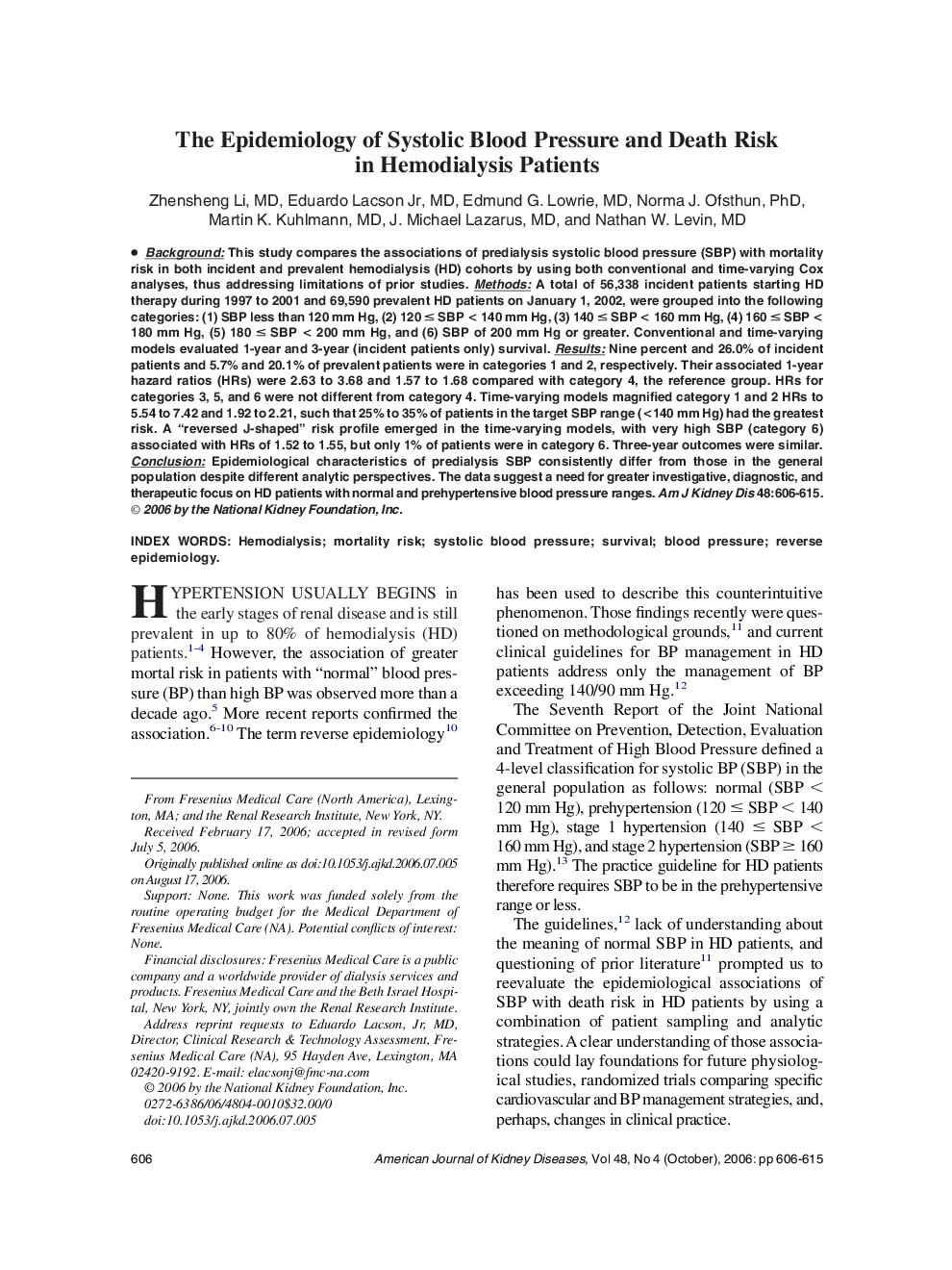| Article ID | Journal | Published Year | Pages | File Type |
|---|---|---|---|---|
| 3851690 | American Journal of Kidney Diseases | 2006 | 10 Pages |
Abstract
Background: This study compares the associations of predialysis systolic blood pressure (SBP) with mortality risk in both incident and prevalent hemodialysis (HD) cohorts by using both conventional and time-varying Cox analyses, thus addressing limitations of prior studies. Methods: A total of 56,338 incident patients starting HD therapy during 1997 to 2001 and 69,590 prevalent HD patients on January 1, 2002, were grouped into the following categories: (1) SBP less than 120 mm Hg, (2) 120 ⤠SBP < 140 mm Hg, (3) 140 ⤠SBP < 160 mm Hg, (4) 160 ⤠SBP < 180 mm Hg, (5) 180 ⤠SBP < 200 mm Hg, and (6) SBP of 200 mm Hg or greater. Conventional and time-varying models evaluated 1-year and 3-year (incident patients only) survival. Results: Nine percent and 26.0% of incident patients and 5.7% and 20.1% of prevalent patients were in categories 1 and 2, respectively. Their associated 1-year hazard ratios (HRs) were 2.63 to 3.68 and 1.57 to 1.68 compared with category 4, the reference group. HRs for categories 3, 5, and 6 were not different from category 4. Time-varying models magnified category 1 and 2 HRs to 5.54 to 7.42 and 1.92 to 2.21, such that 25% to 35% of patients in the target SBP range (<140 mm Hg) had the greatest risk. A “reversed J-shaped” risk profile emerged in the time-varying models, with very high SBP (category 6) associated with HRs of 1.52 to 1.55, but only 1% of patients were in category 6. Three-year outcomes were similar. Conclusion: Epidemiological characteristics of predialysis SBP consistently differ from those in the general population despite different analytic perspectives. The data suggest a need for greater investigative, diagnostic, and therapeutic focus on HD patients with normal and prehypertensive blood pressure ranges.
Keywords
Related Topics
Health Sciences
Medicine and Dentistry
Nephrology
Authors
Zhensheng MD, Eduardo MD, Edmund G. MD, Norma J. PhD, Martin K. MD, J. Michael MD, Nathan W. MD,
